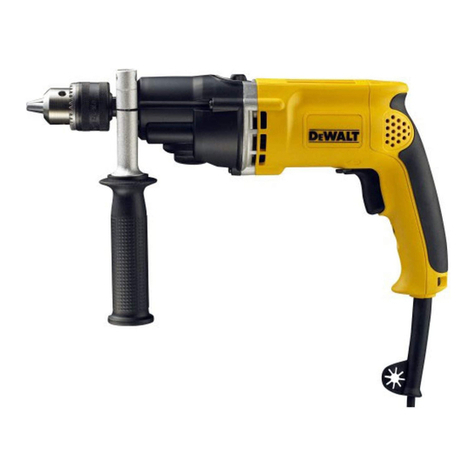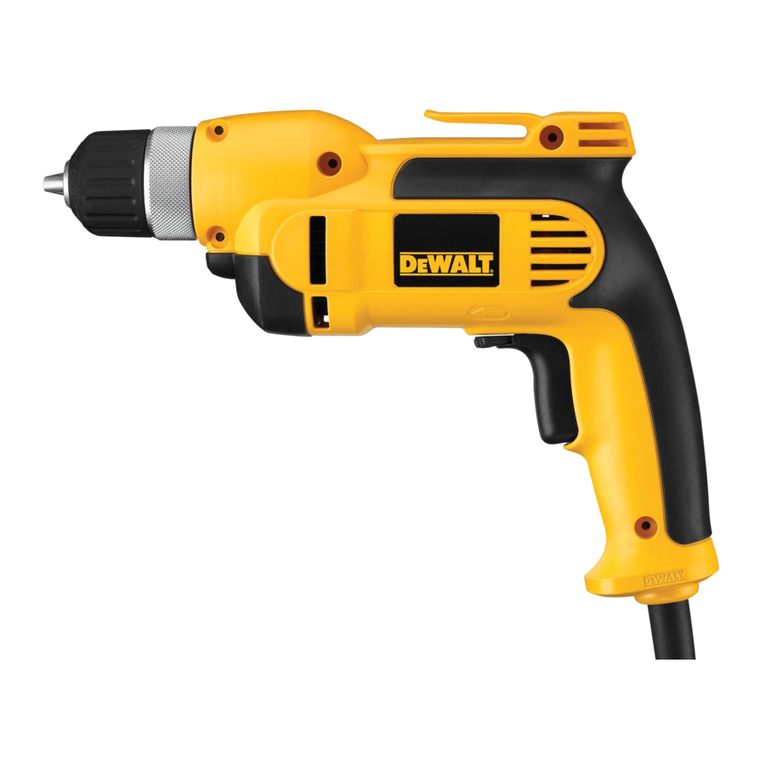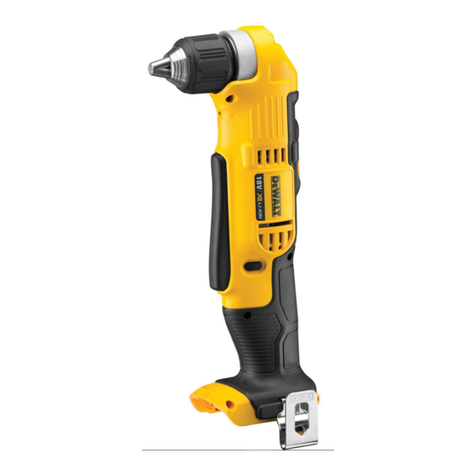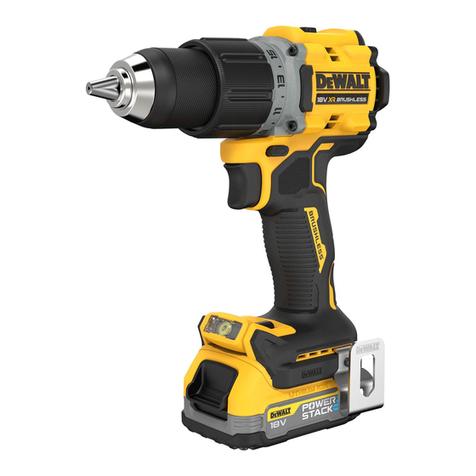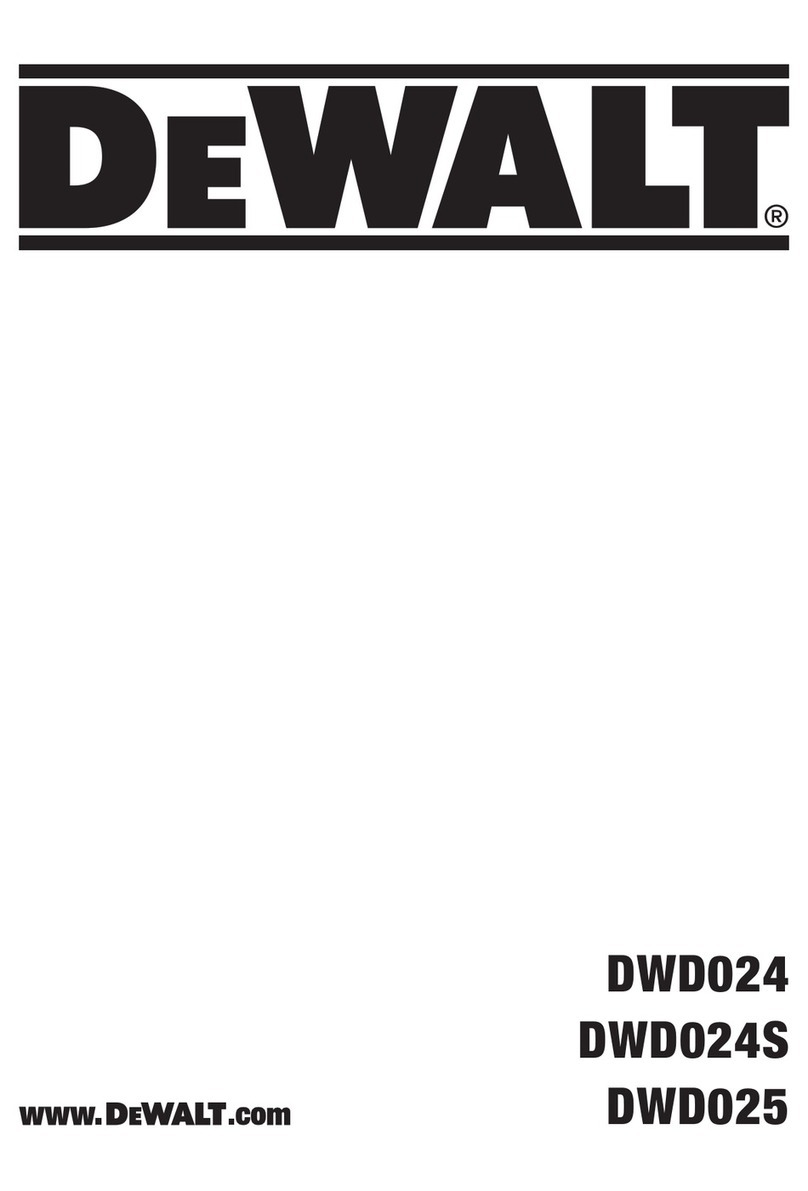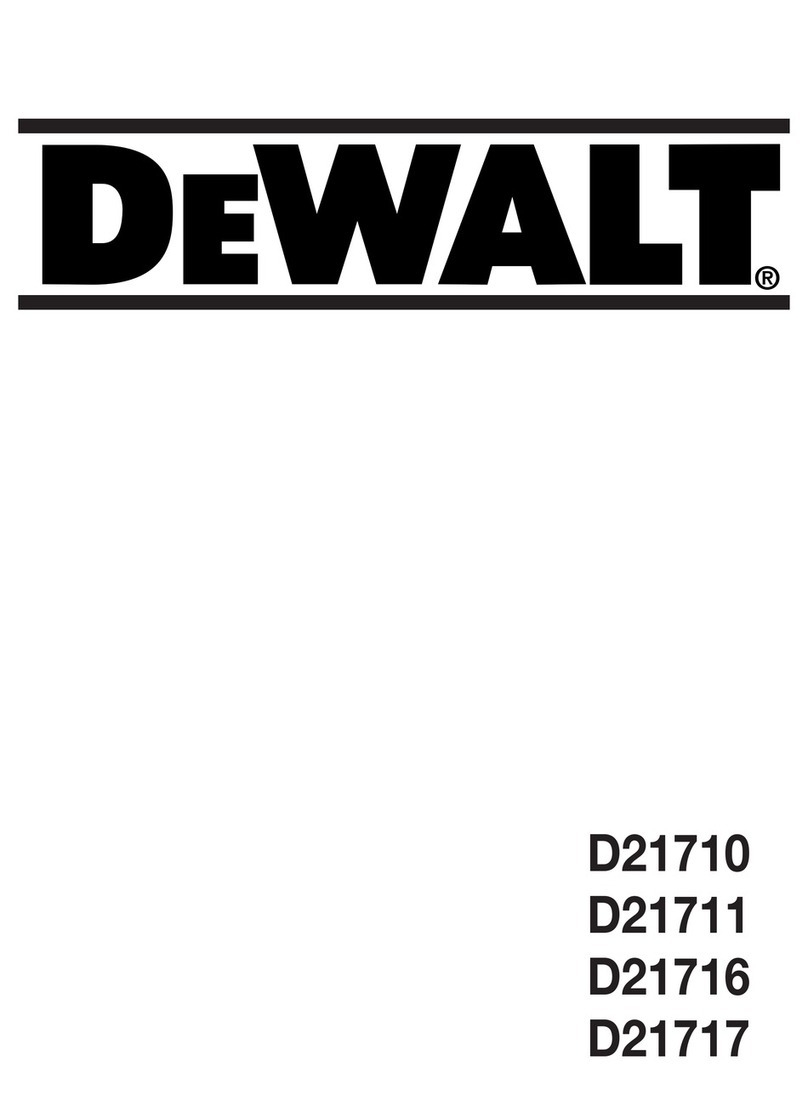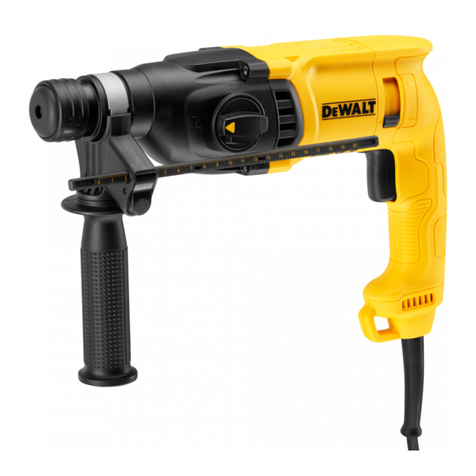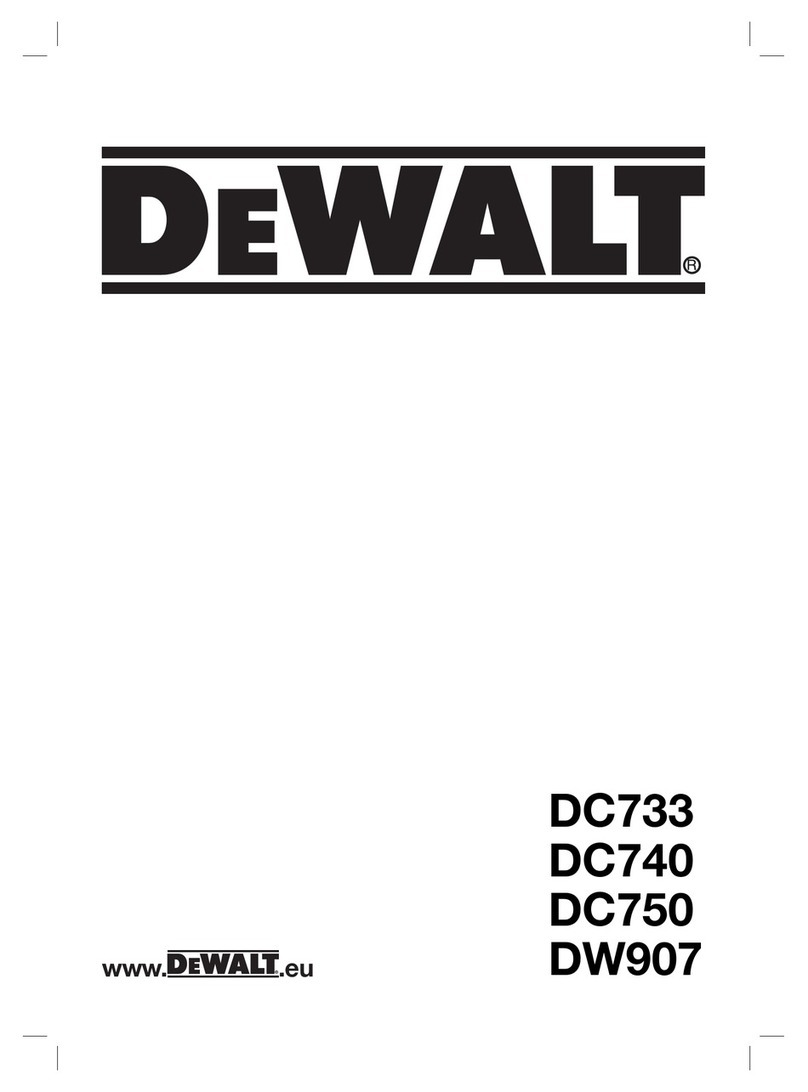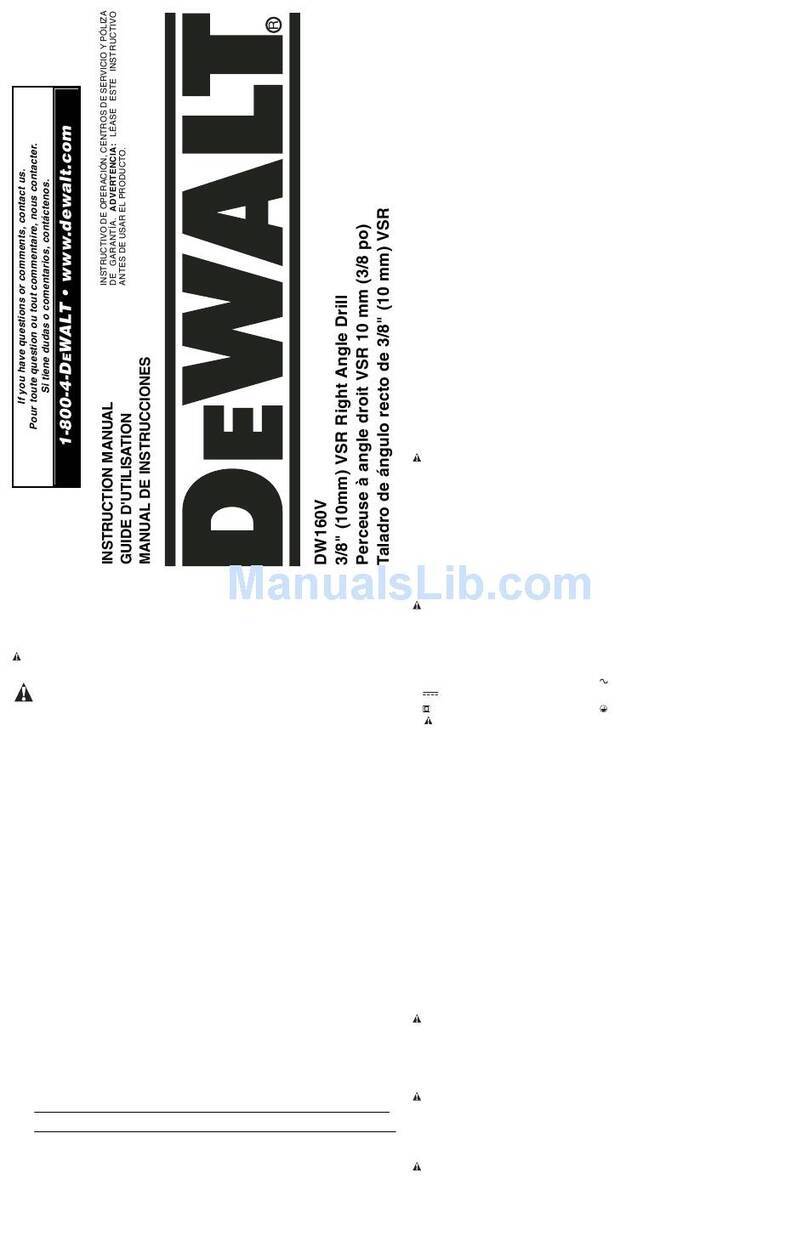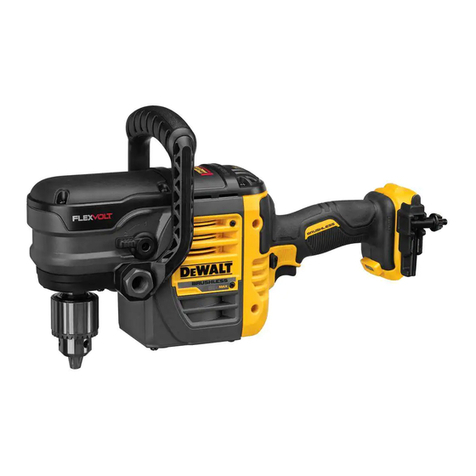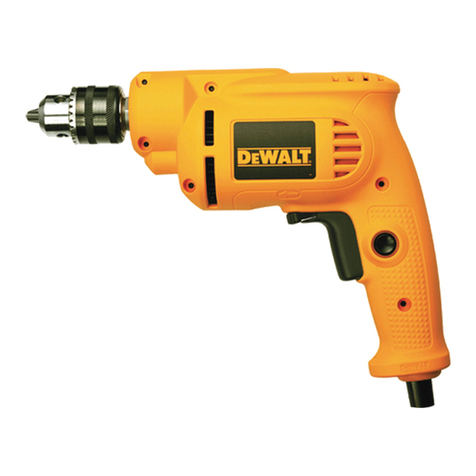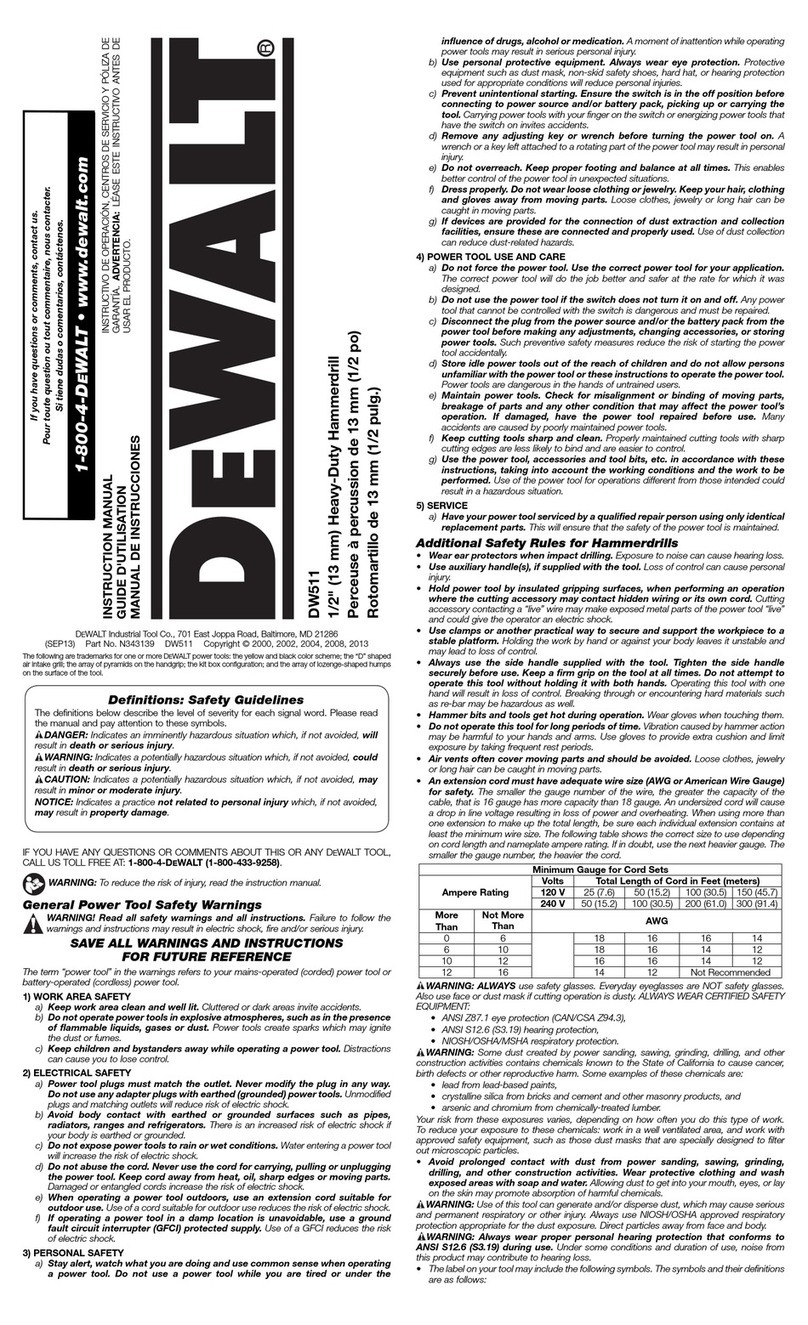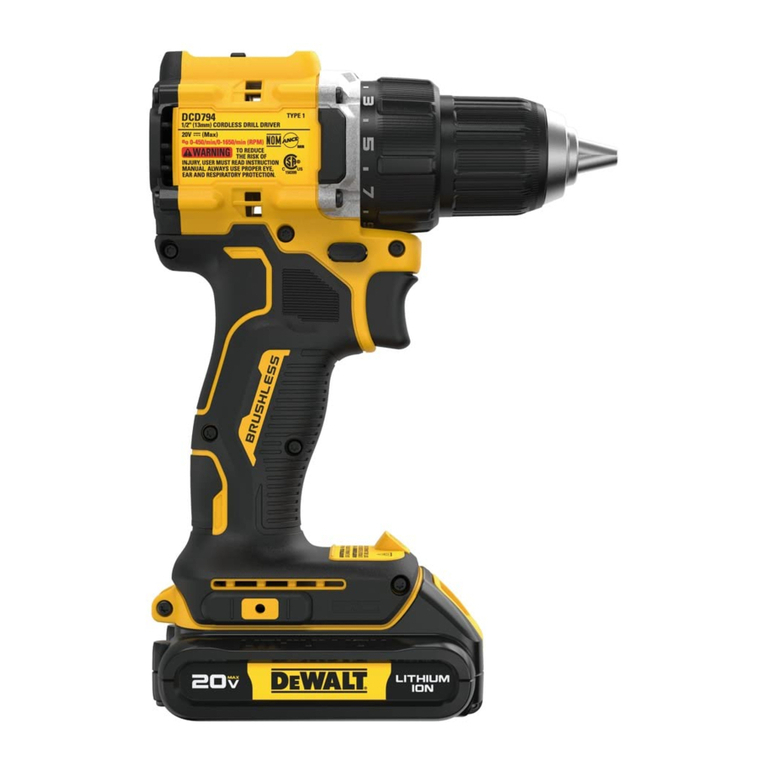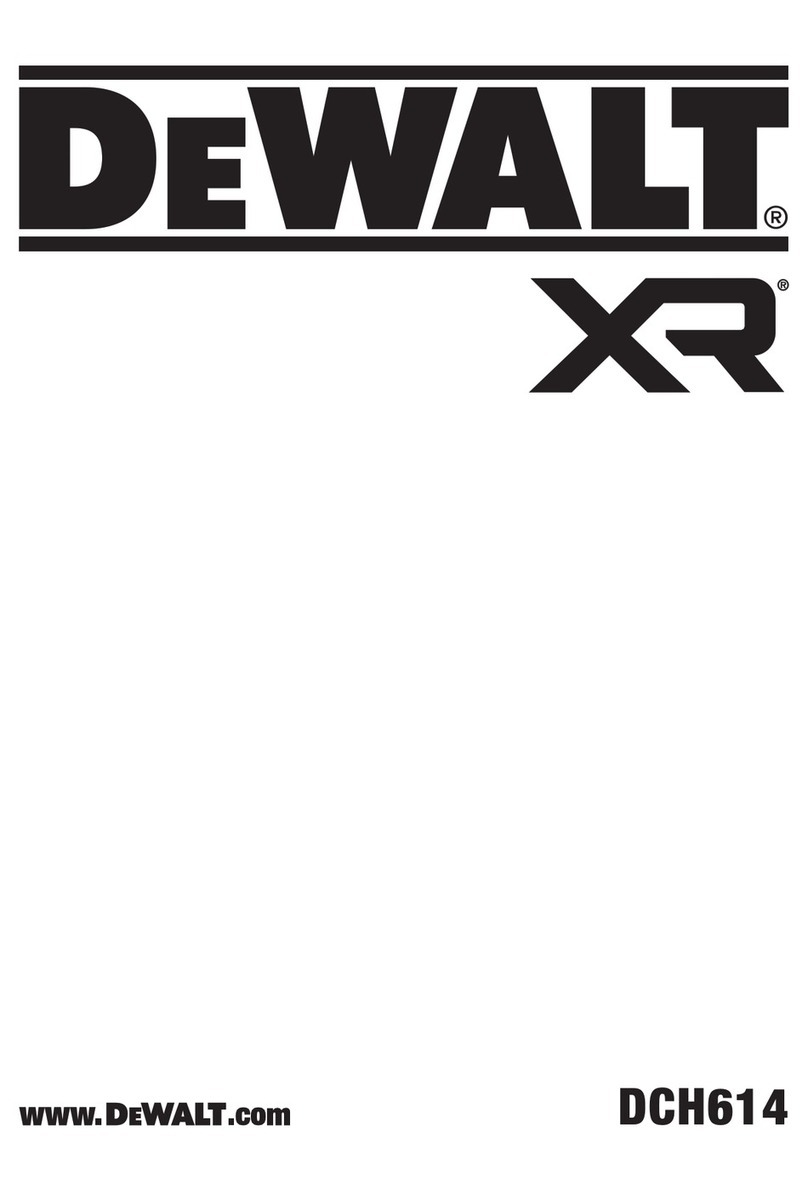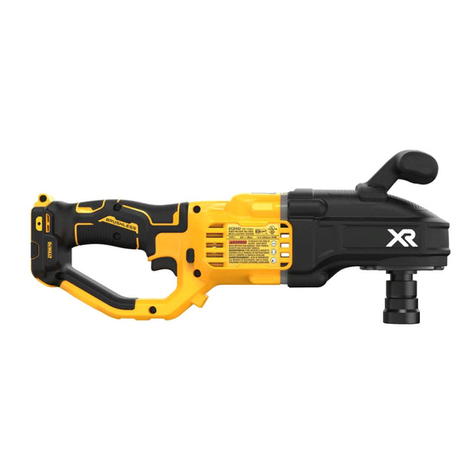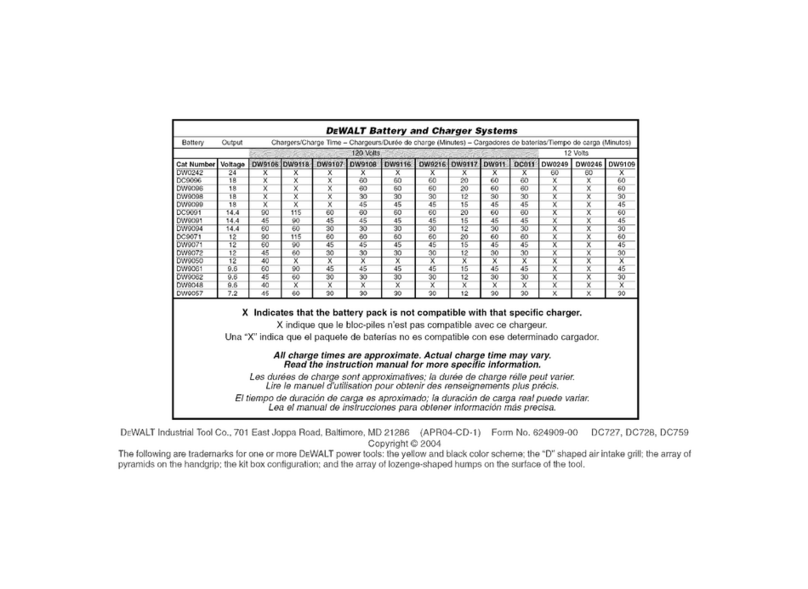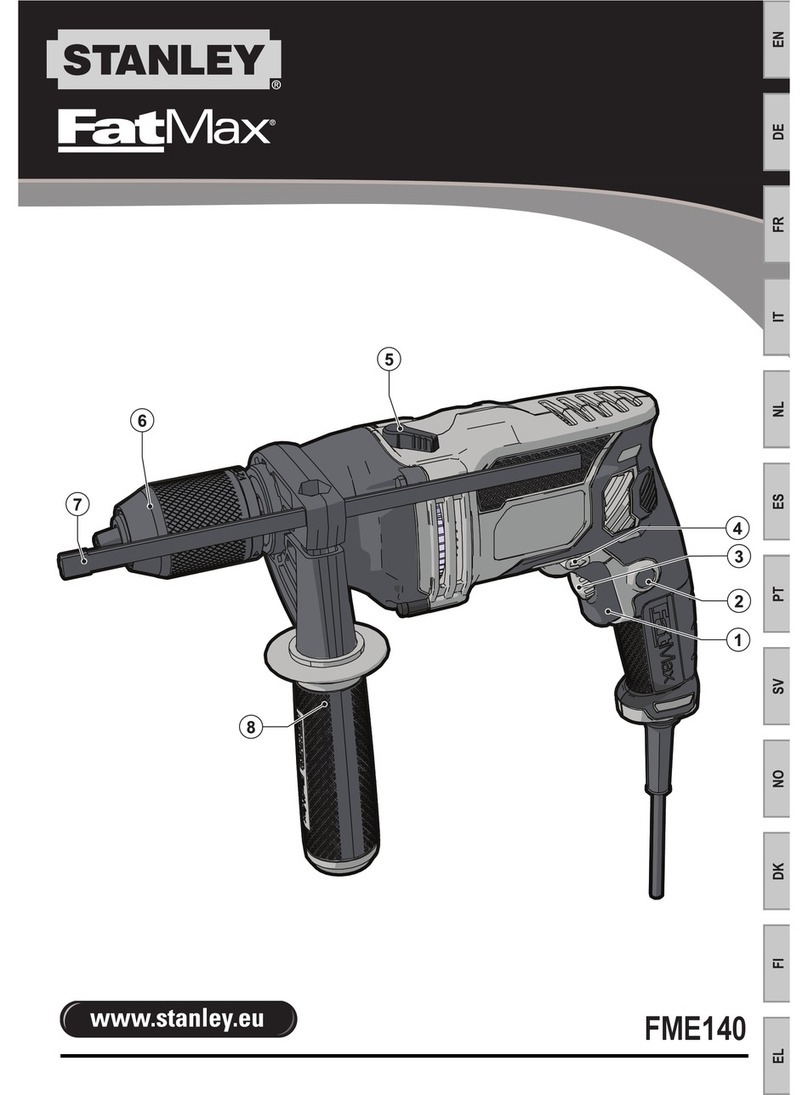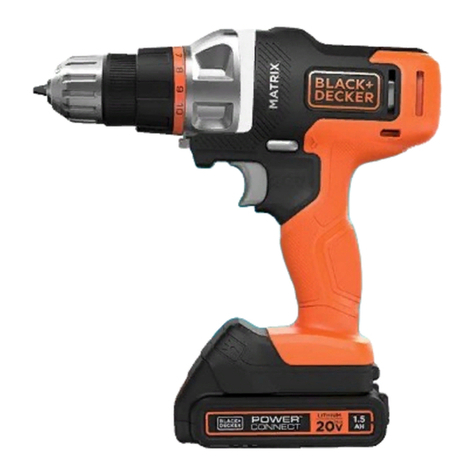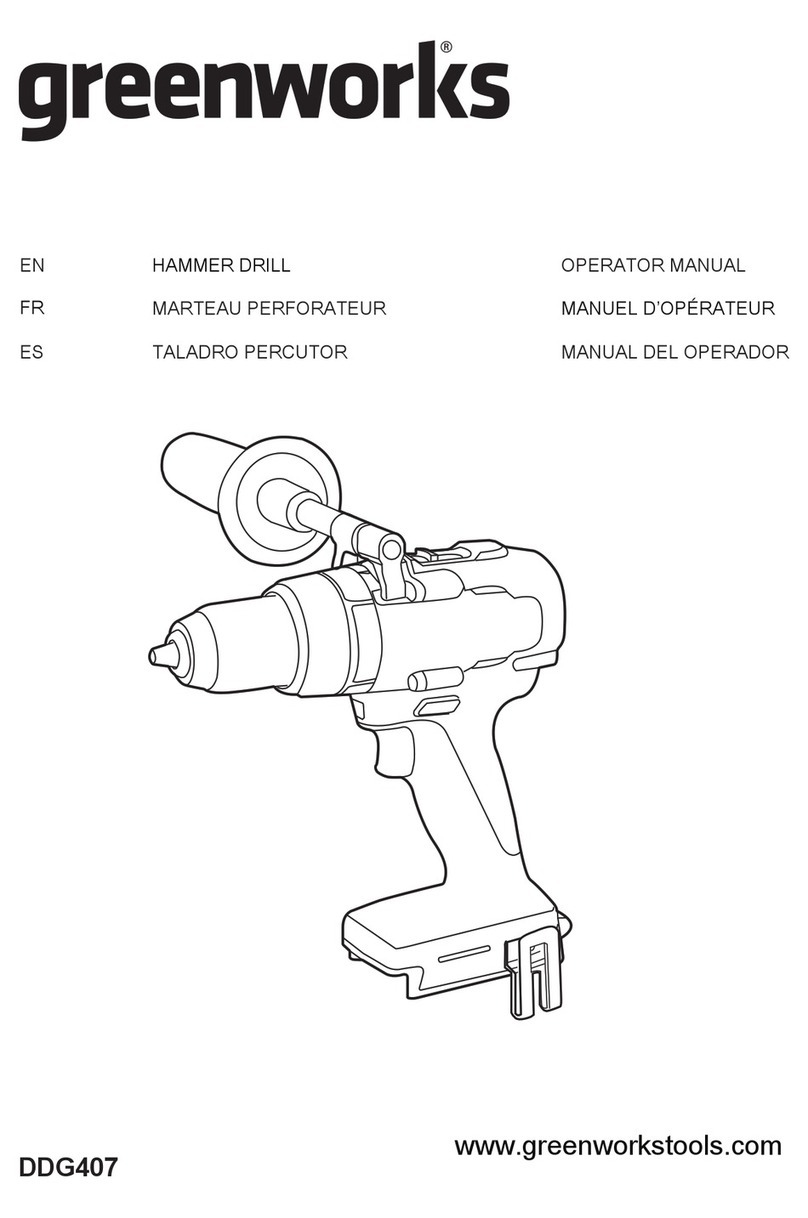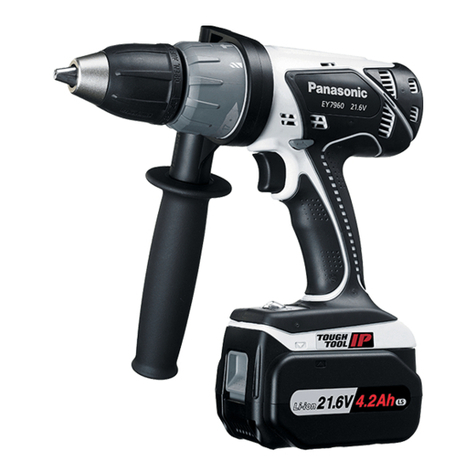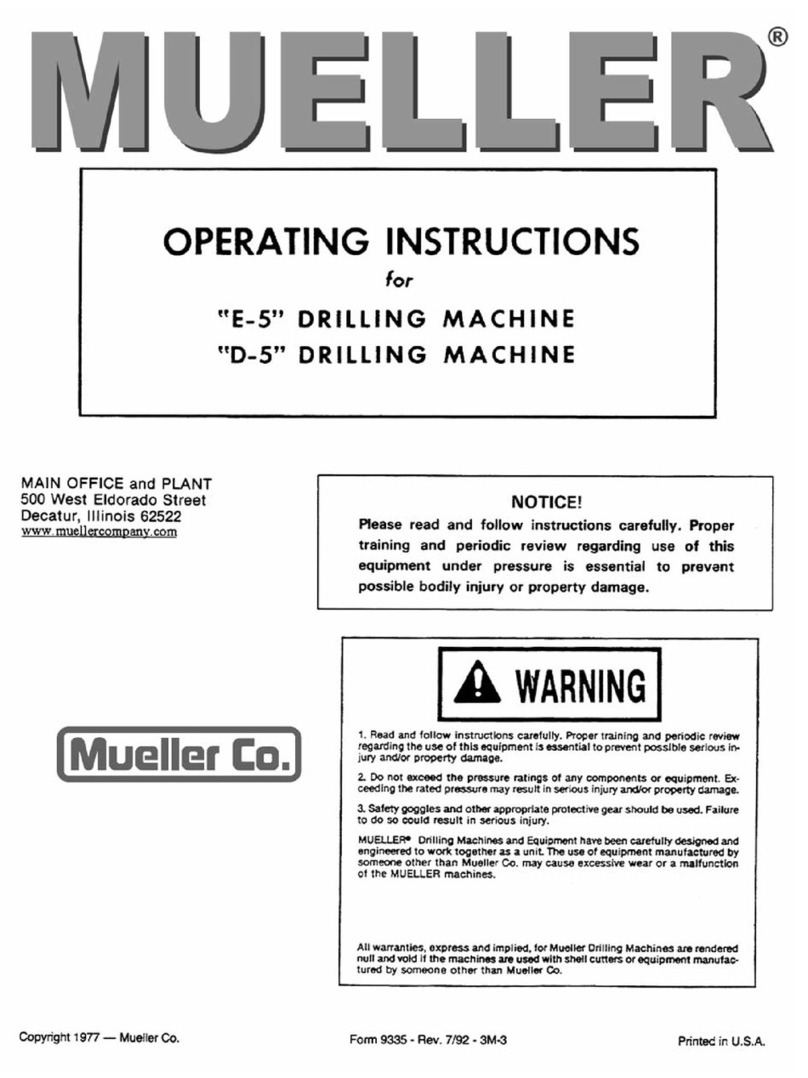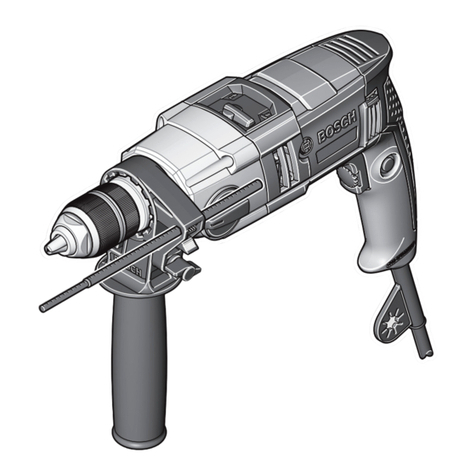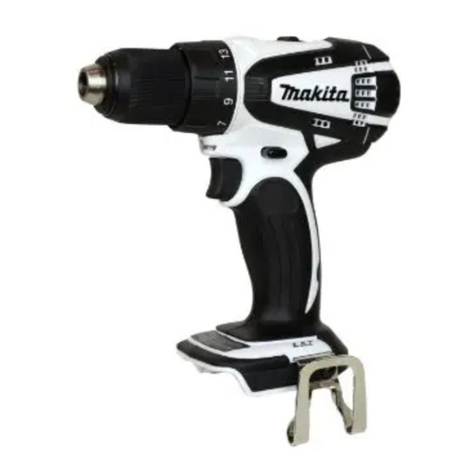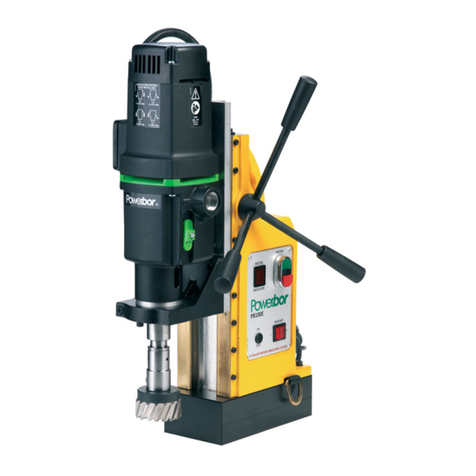
5
ENGLISH
Additional Specific Safety Rules for Drills/
Drivers/Hammerdrills
• Wear ear protectors when impact drilling. Exposure to
noise can cause hearingloss.
• Use the auxiliary handle(s), if supplied with the tool. Loss
of control can cause personalinjury.
• Brace the tool properly before use. This tool produces a
high output torque and without properly bracing the tool
during operation, loss of control may occur resulting in
personalinjury.
• Hold the power tool by insulated gripping surfaces when
performing an operation where the cutting accessory
may contact hidden wiring. Cutting accessory or fasteners
contacting a “live” wire may make exposed metal parts of the
power tool “live” and could give the operator an electricshock.
Safety Instructions When Using Long
DrillBits
• Never operate at higher speed than the maximum
speed rating of the drill bit. At higher speeds, the bit is likely
to bend if allowed to rotate freely without contacting the
workpiece, resulting in personalinjury.
• Always start drilling at low speed and with the bit tip
in contact with the workpiece. At higher speeds, the bit is
likely to bend if allowed to rotate freely without contacting the
workpiece, resulting in personalinjury.
• Apply pressure only in direct line with the bit and do not
apply excessive pressure. Bits can bend causing breakage or
loss of control, resulting in personalinjury.
• Use clamps or other practical way to secure and support
the workpiece to a stable platform. Holding the work by
hand or against your body is unstable and may lead to loss
ofcontrol.
• Wear ear protectors when hammering for extended
periods of time. Prolonged exposure to high intensity noise
can cause hearing loss. Temporary hearing loss or serious ear
drum damage may result from high sound levels generated
byhammerdrilling.
• Wear safety goggles or other eye protection. Hammering
and drilling operations cause chips to fly. Flying particles can
cause permanent eyedamage.
g ) Follow all charging instructions and do not charge
the battery pack or tool outside the temperature
range specified in the instructions. Charging
improperly or at temperatures outside the specified range
may damage the battery and increase the risk offire.
6) Service
a ) Have your power tool serviced by a qualified repair
person using only identical replacement parts. This
will ensure that the safety of the power tool ismaintained.
b ) Never service damaged battery packs. Service
of battery packs should only be performed by the
manufacturer or authorized serviceproviders.
b ) Do not use the power tool if the switch does not turn
it on and off. Any power tool that cannot be controlled
with the switch is dangerous and must berepaired.
c ) Disconnect the plug from the power source and/
or remove the battery pack, if detachable, from
the power tool before making any adjustments,
changing accessories, or storing power tools. Such
preventive safety measures reduce the risk of starting the
power toolaccidentally.
d ) Store idle power tools out of the reach of children
and do not allow persons unfamiliar with the power
tool or these instructions to operate the power tool.
Power tools are dangerous in the hands of untrainedusers.
e ) Maintain power tools and accessories. Check for
misalignment or binding of moving parts, breakage
of parts and any other condition that may affect the
power tool’s operation. If damaged, have the power
tool repaired before use. Many accidents are caused by
poorly maintained powertools.
f ) Keep cutting tools sharp and clean. Properly
maintained cutting tools with sharp cutting edges are less
likely to bind and are easier tocontrol.
g ) Use the power tool, accessories and tool bits etc.
in accordance with these instructions, taking into
account the working conditions and the work to be
performed. Use of the power tool for operations different
from those intended could result in a hazardoussituation.
h ) Keep handles and grasping surfaces dry, clean and
free from oil and grease. Slippery handles and grasping
surfaces do not allow for safe handling and control of the
tool in unexpectedsituations.
5) Battery Tool Use and Care
a ) Recharge only with the charger specified by the
manufacturer. A charger that is suitable for one type
of battery pack may create a risk of fire when used with
another batterypack.
b ) Use power tools only with specifically designated
battery packs. Use of any other battery packs may create
a risk of injury andfire.
c ) When battery pack is not in use, keep it away from
other metal objects, like paper clips, coins, keys,
nails, screws or other small metal objects, that can
make a connection from one terminal to another.
Shorting the battery terminals together may cause burns
or afire.
d ) Under abusive conditions, liquid may be ejected
from the battery; avoid contact. If contact
accidentally occurs, flush with water. If liquid
contacts eyes, additionally seek medical help. Liquid
ejected from the battery may cause irritation orburns.
e ) Do not use a battery pack or tool that is damaged
or modified. Damaged or modified batteries may exhibit
unpredictable behaviour resulting in fire, explosion or risk
ofinjury.
f ) Do not expose a battery pack or tool to fire or
excessive temperature. Exposure to fire or temperature
above 130°C may causeexplosion.


